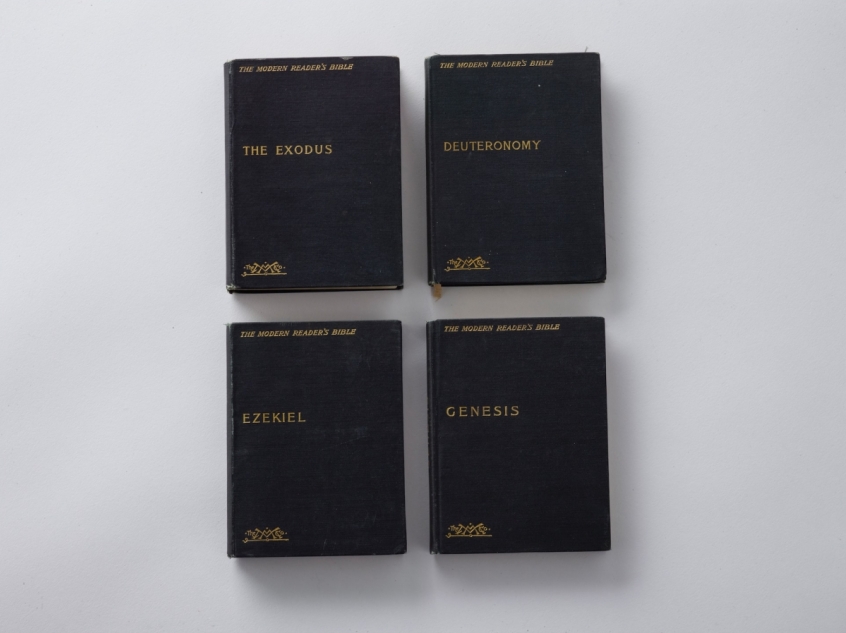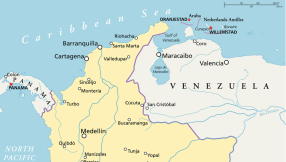
The tribes of Israel stem back to Jacob, son of Isaac, son of Abraham. This is the story ...
Jacob
The first use of the name Israel in the Bible is in Genesis 32:28 when it is given as another name for Jacob. Jacob was the younger of twin sons born to Isaac and Rebecca, and Isaac was the second son of Abraham.
Israel a name for Jacob
In Genesis 32, the story is told of Jacob wrestling with a man, who Hosea later identified as an angel (Hosea 12:4). The figure said: 'Your name will no longer be Jacob, but Israel, because you have struggled with God and with humans and have overcome.' Then again in Genesis 35:10, God said to him, 'Your name is Jacob, but you will no longer be called Jacob; your name will be Israel.' After this, Jacob is known as both Jacob and Israel and both names continued to be used interchangeably.
Sons and Daughters of Israel
Jacob, alias Israel, had many children. His name Israel came to be used like the family name or surname. He had twelve sons who are named. The children who were named were, in order of birth, Reuben, Simeon, Levi, Judah, Dan, Naphtali, Gad, Asher, Issachar, Zebulun, Dinah, Joseph, and Benjamin. Other daughters are also mentioned (Genesis 34:9; 37:34-35; 46:5-7; 46:15), but we don't know how many he had. Dinah is the only daughter who is named (Genesis 30:21).
Israel in Egypt
Jacob and his family settled in Goshen, in Egypt, at the invitation of Joseph, as a result of a famine (Genesis 47:27). The first reference to the 'tribes of Israel' comes in the last chapter of Genesis, chapter 49, after the death of Jacob (Israel). According to the Bible, Jacob lived in Egypt for 17 years before dying there. Joseph and the Israelites then lived peacefully in Goshen for many generations. They were not enslaved until sometime after Joseph died, some 80 years later (Exodus 1:6-10). The text is a bit vague about when slavery began, and seems to imply it was during a new dynasty which knew nothing about them (Exodus 1:8), so they must have lived there a century or more before they were enslaved, by which time the twelve tribes of Israel had grown in number.
Tribes of Israel leaving Egypt
Moses, and his brother Aaron and sister Miriam, were born into the tribe of Levi. Moses led the tribes of Israel out of Egypt, as told in the book of Exodus. When they were about to cross into their new land over the Jordan, land was allotted according to tribe, as described in the book of Joshua.
Two types of tribes
When we talk of the tribes of Israel it gets a little bit complicated. The tribe of Levite were considered a priestly tribe and had no tribal land, but the two sons of Joseph called Ephraim and Manasseh were considered half-tribes with separate territories. Thus there were twelve patriarchs forming ancestral tribes (including Joseph and Levi), and twelve landed tribes (excluding the Levites but including Ephraim and Manasseh), making effectively thirteen tribes.
Territory of Israel
Later the tribes of Israel settled and formed their own country. For a few centuries, the territory of Israel was ruled by the Judges. After the Judges, the territory of Israel became a kingdom ruled by kings and queens. The first kings were Saul, David and Solomon. Under the kings David and Solomon, territories were conquered beyond the tribal lands of Israel.
The Northern Tribes
After the death of King Solomon, Rehoboam became king. During his reign, the Kingdom of Israel split into two. Rehoboam remained king of the southern tribes called the Kingdom of Judah. The northern tribes established a new kingdom under King Jeroboam which kept the name of Israel.
Sometimes these northern tribes are misleadingly called the 'ten tribes' even though it was actually mainly the seven full-tribes of Asher, Dan, Gad, Issachar, Naphtali, Reuben, and Zebulun, and the two half-tribes of Manasseh and Ephraim. The northern kingdom of Israel fell to Assyria about 722 BC. At this time, many Israelites from the northern kingdom moved south to the Kingdom of Judah.
The Southern Tribes
Although the southern kingdom was called the Kingdom of Judah, it included not just the tribe of Judah but also the tribes of Benjamin, and the tribe of Simeon, which was surrounded by the tribe of Judah, and the southern part of the tribe of Dan. The Kingdom of Judah also included most of the tribe of Levi, because the Levites performed religious duties at the Temple in Jerusalem. Over time these tribes were joined by Israelites from northern tribes who sought refuge amongst them (2 Chronicles 15:9). They all remained there until many were taken to Babylonia, during three deportations starting in about 597 BC.
The tribes in Exile
The term Jew, was used to refer to the exiled Judean people taken to Babylonia from the kingdom of Judah, regardless of whether or not they were of the tribe of Judah. The Jews remained in exile until they were freed by a decree from Cyrus the Great in about 538 BC. Ezra and Nehemiah tell the story of the Jews who returned from exile.
Tribes in the New Testament
In the New Testament, there is still the idea of the people of Israel being twelve tribes, and some people still identified as being of a particular tribe. Zechariah and Elizabeth were from the tribe of Levi (Luke 1:3). Jesus is described as of the tribe of Judah. The prophet Anna is described as of the tribe of Asher (Luke 2:36). Paul calls himself of the tribe of Benjamin (Romans 11:1; Philippians 3:5). In John's vision in Revelation 7:4-8 he identifies 144,000 Israelites made up of 12,000 from each ancestral tribe. This is in symbolic language.













